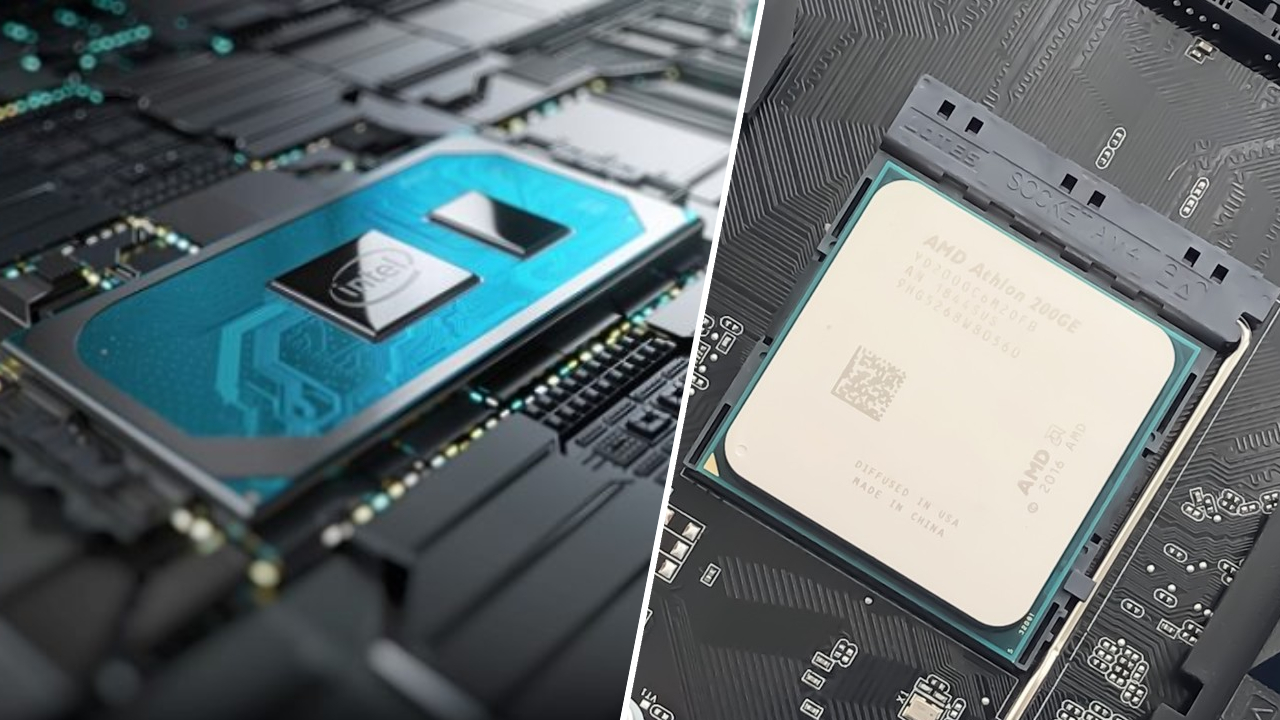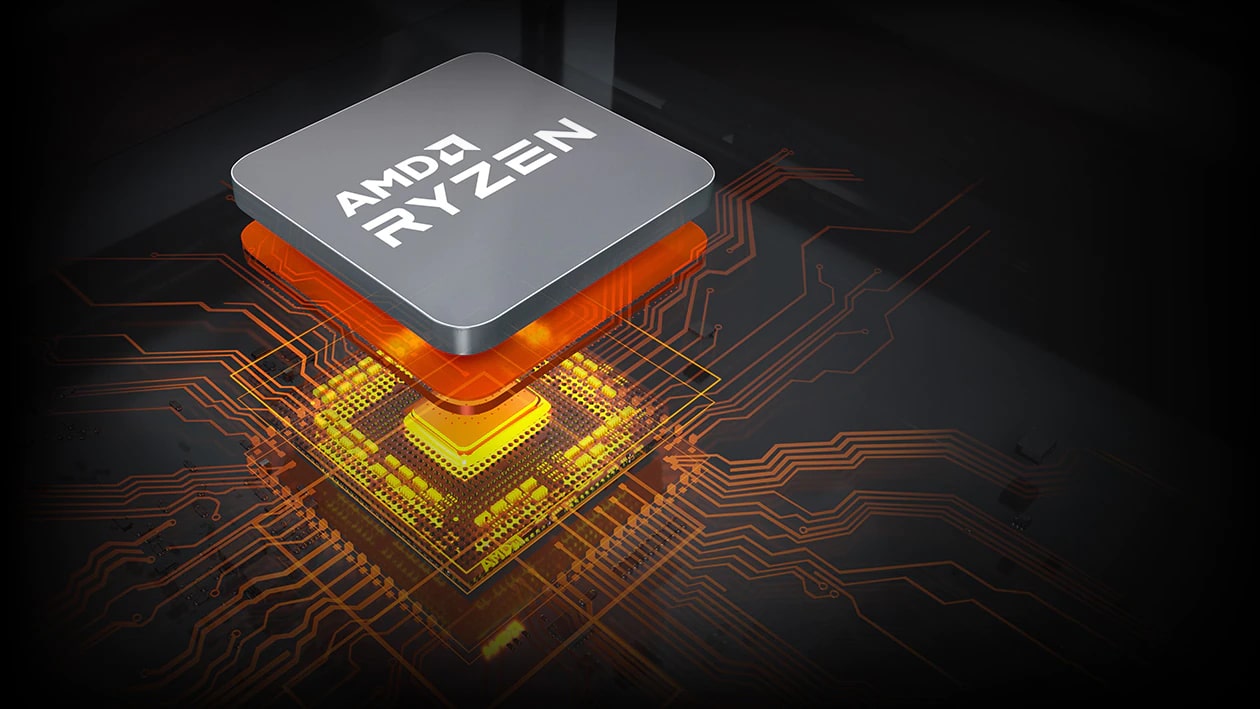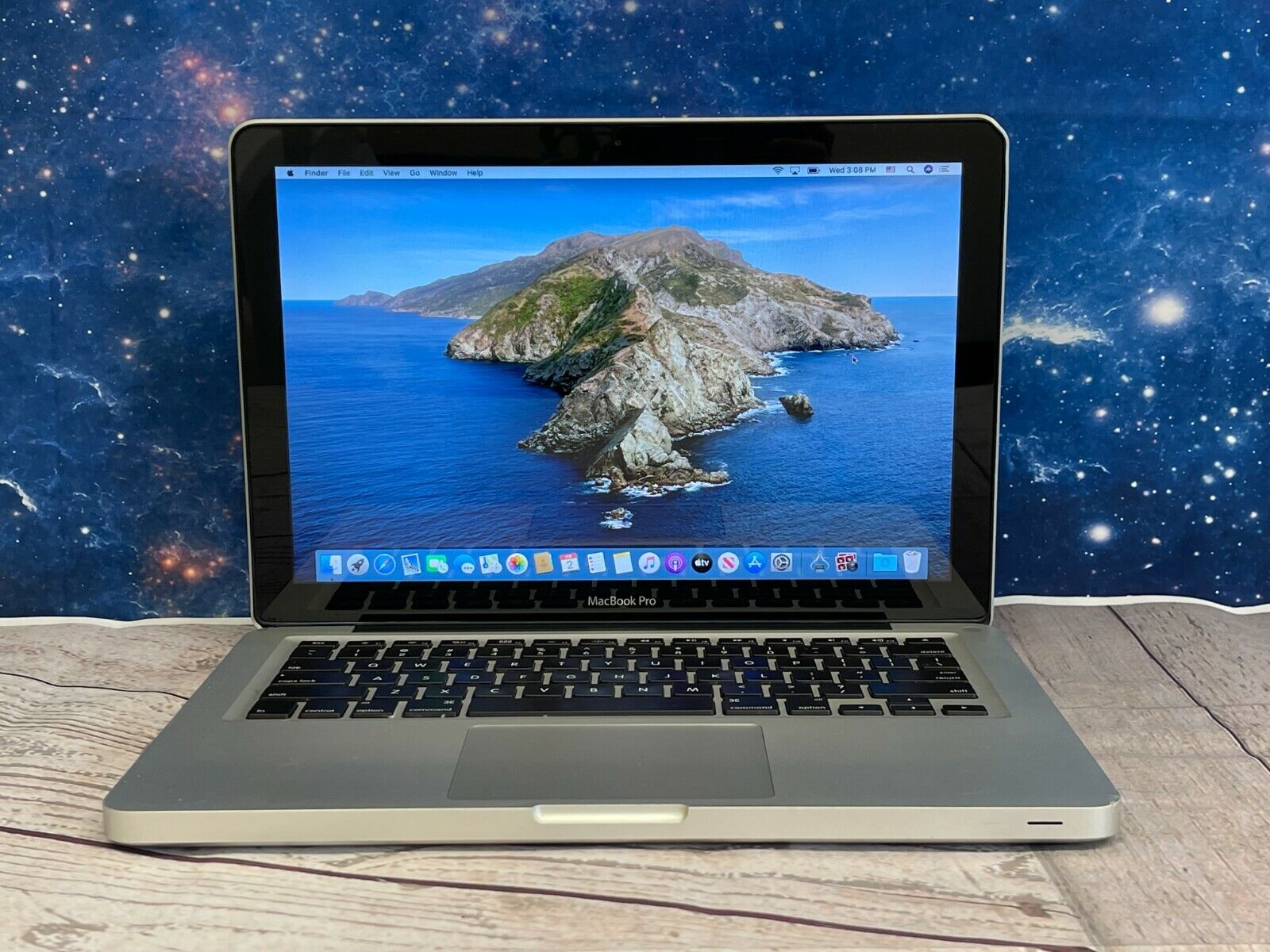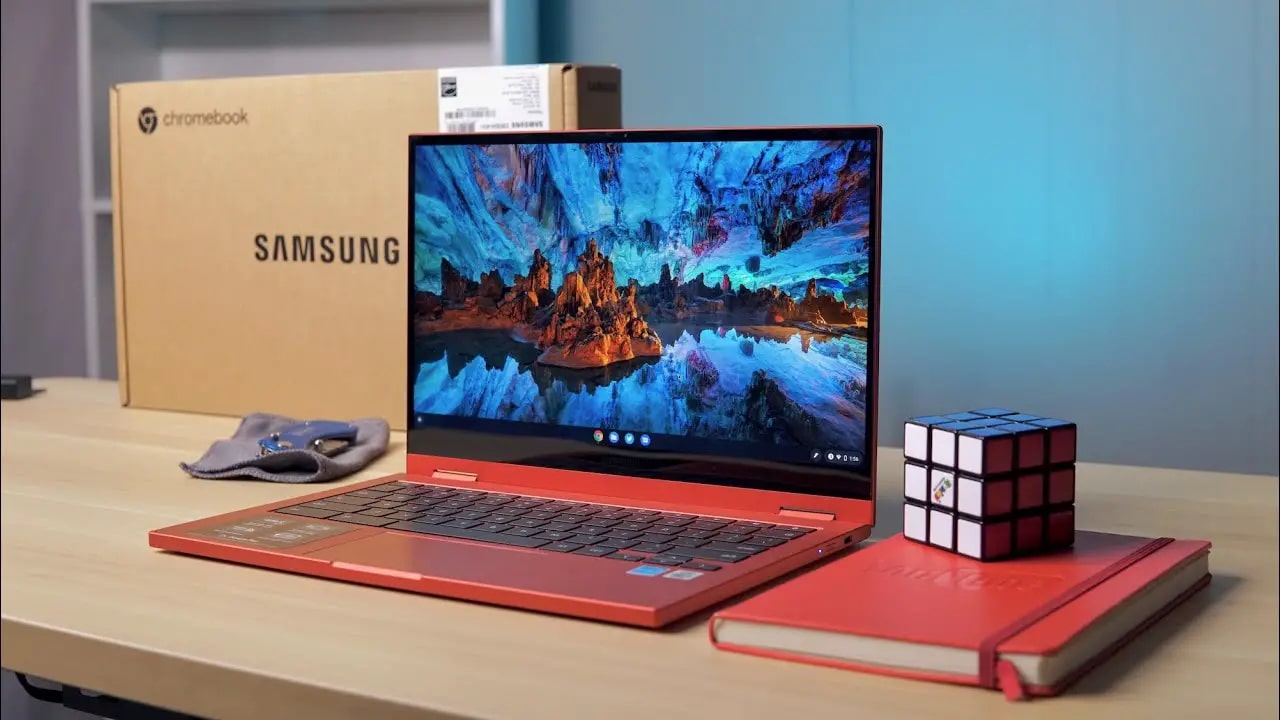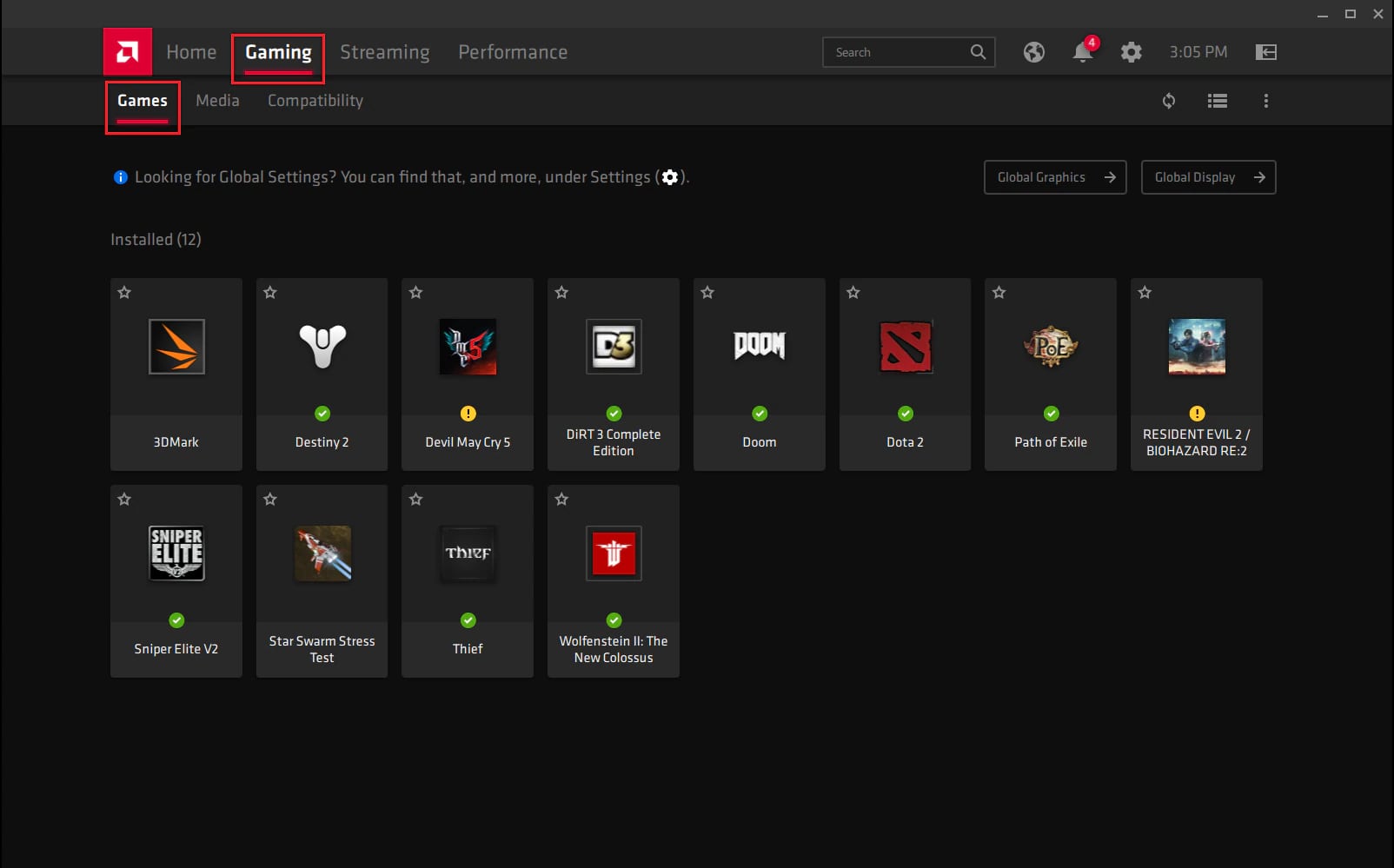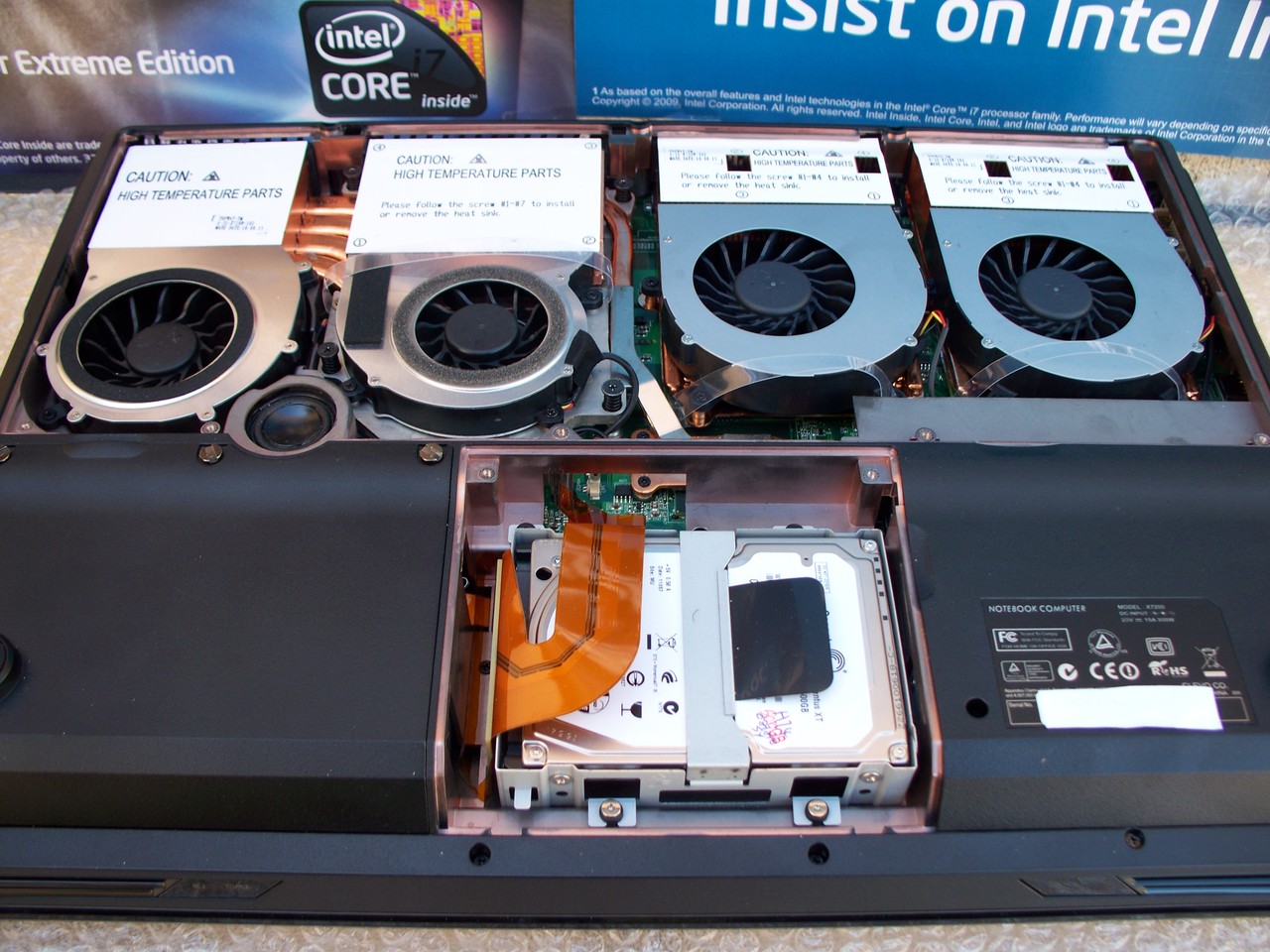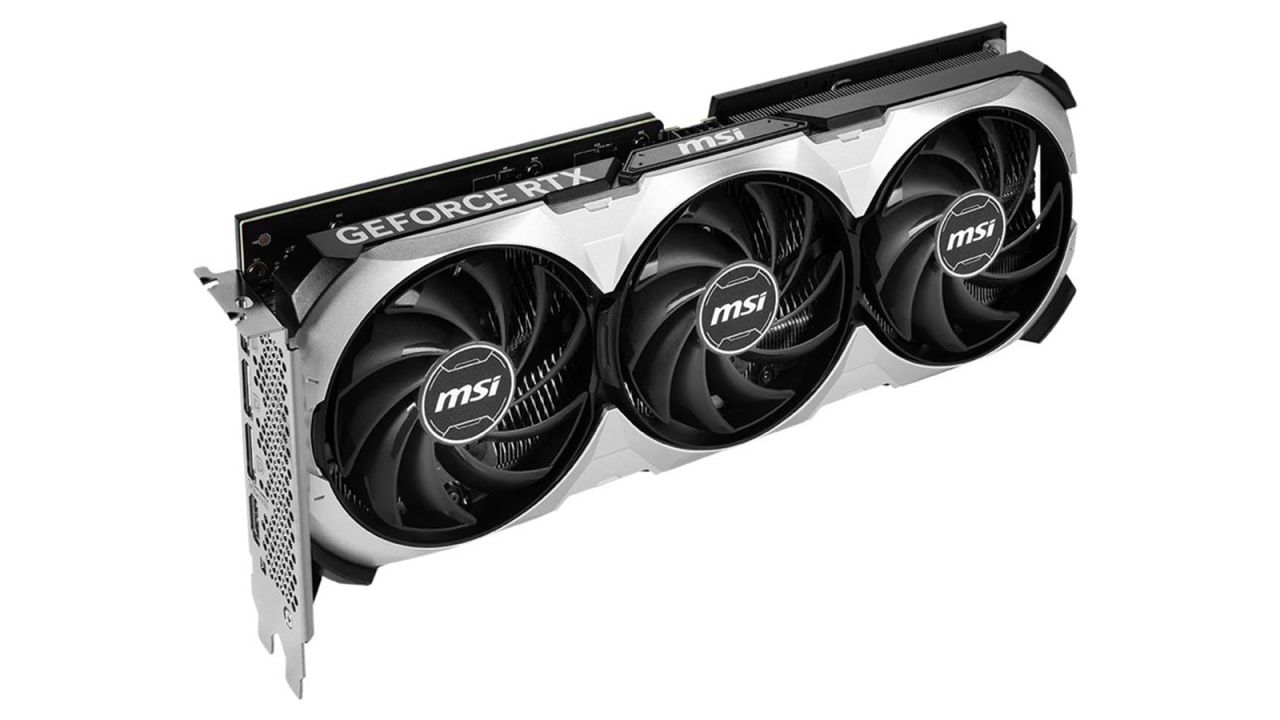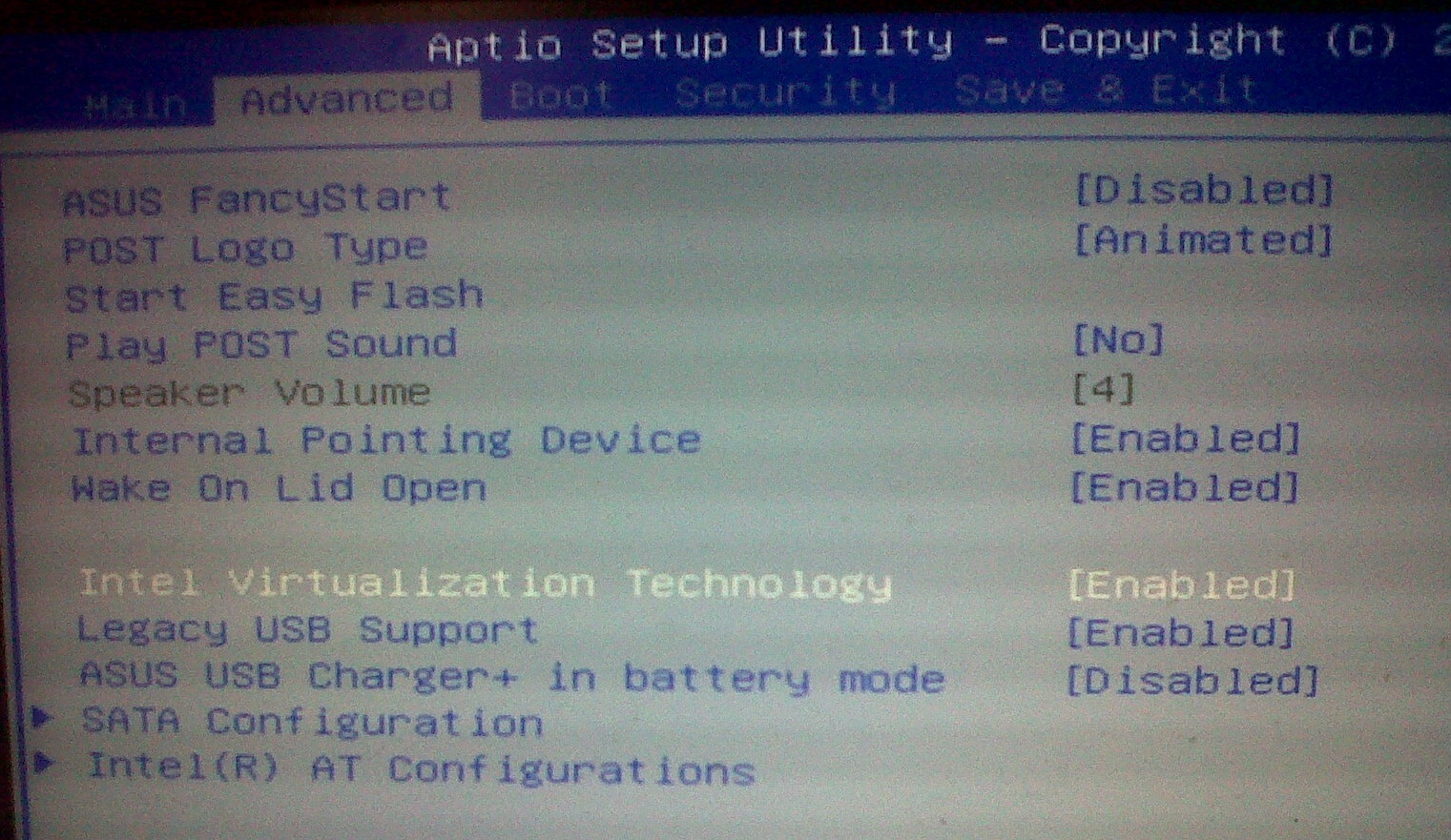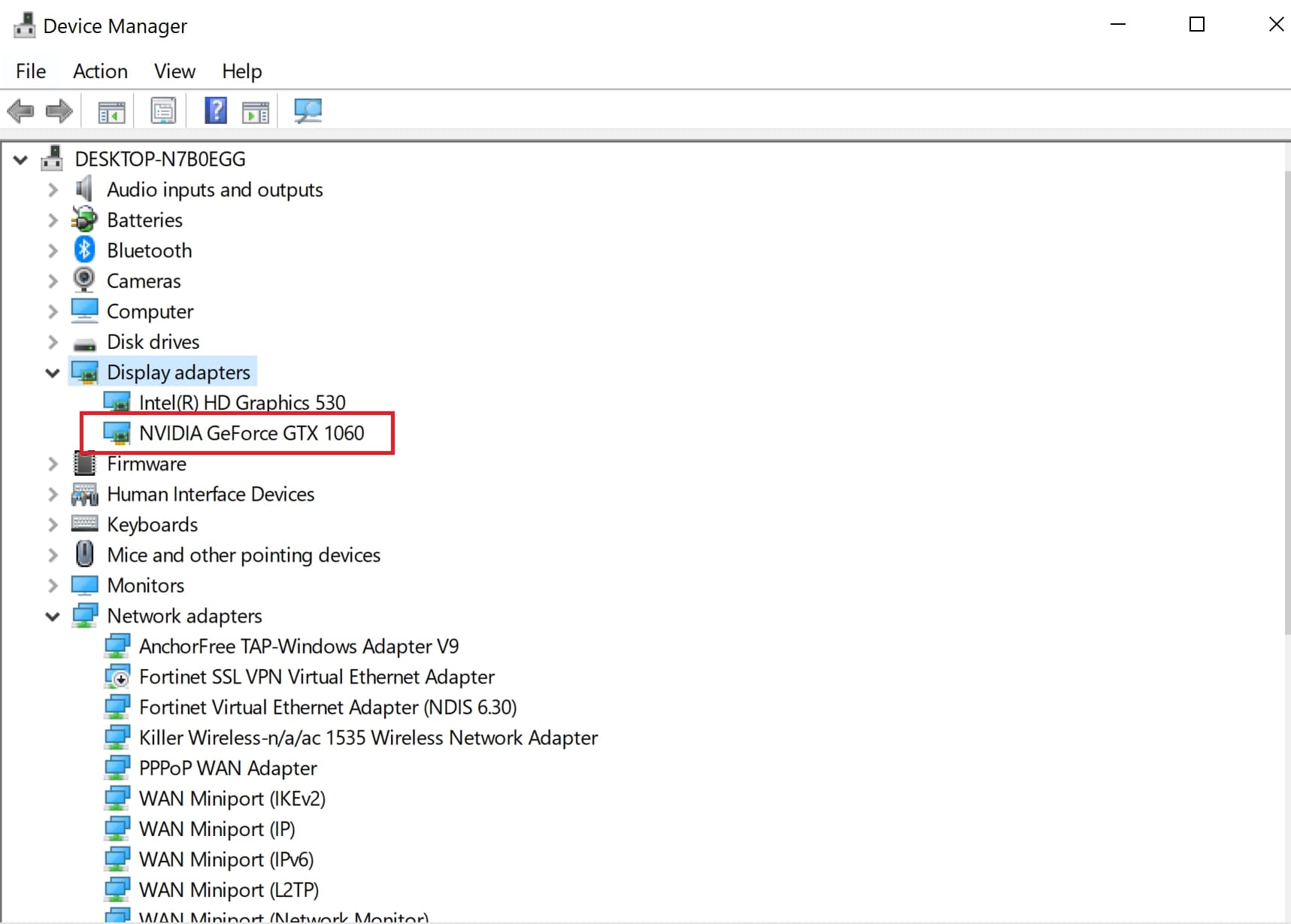Introduction
An integrated graphics card, also known as an onboard or integrated GPU (Graphics Processing Unit), is a computer component that is integrated within the motherboard of a computer. It is responsible for rendering and displaying images, videos, and animations on the screen of a computer or laptop.
Integrated graphics cards have become increasingly common in modern computers, especially in laptops and budget desktop models. They are designed to provide basic graphics performance for everyday tasks such as web browsing, document editing, and media playback.
While integrated graphics cards offer certain advantages such as cost-effectiveness and energy efficiency, they also have some limitations compared to dedicated graphics cards. It is important to understand how they work and their pros and cons before deciding whether an integrated graphics card meets your specific requirements.
This article will provide an in-depth overview of integrated graphics cards, including their definition, functionality, advantages, disadvantages, and how they compare to dedicated graphics cards. Additionally, it will offer insights into the factors to consider when choosing an integrated graphics card, how to check and update the graphics card drivers, and tips for optimizing performance with an integrated graphics card.
Definition of an Integrated Graphics Card
An integrated graphics card, also known as an onboard or integrated GPU (Graphics Processing Unit), refers to a graphics processing component that is integrated directly into the motherboard of a computer or laptop. Unlike dedicated graphics cards, which are separate and independent components, integrated graphics cards are built-in and share system resources with the CPU (Central Processing Unit).
The primary function of an integrated graphics card is to handle the rendering and display of visuals on a computer’s screen. It works by utilizing a portion of the computer’s main memory (RAM) for graphics processing tasks. This integration allows for a more compact and cost-effective design, as there is no need for a separate graphics card.
Integrated graphics cards are typically capable of providing basic graphics performance for everyday computing tasks such as browsing the internet, word processing, and multimedia playback. However, they generally fall short in terms of performance and capabilities compared to dedicated graphics cards, which are specifically designed for more demanding tasks such as gaming, video editing, and 3D rendering.
Integrated graphics cards utilize shared system memory, which means that they do not have dedicated video memory like their dedicated counterparts. This can result in a decrease in overall system performance, especially when running graphics-intensive applications that require large amounts of video memory.
Furthermore, integrated graphics cards primarily rely on the computer’s CPU for processing power, as they often lack dedicated processing units and dedicated memory for graphics tasks. This can lead to slower performance and increased strain on the CPU, particularly when handling complex graphics or running multiple applications simultaneously.
With advancements in technology, integrated graphics cards have made significant progress in terms of performance and capabilities. Modern integrated GPUs, such as Intel’s integrated graphics solutions and AMD’s Ryzen APUs, can handle more demanding tasks and even offer entry-level gaming capabilities.
However, it is important to note that while integrated graphics cards have improved, they still cannot match the performance and dedicated graphics memory of high-end dedicated graphics cards. Therefore, users looking for enhanced graphics performance for tasks such as gaming or advanced video editing may need to consider investing in a dedicated graphics card.
How an Integrated Graphics Card Works
An integrated graphics card works by utilizing a portion of the computer’s system resources, including the CPU and RAM, to handle graphics processing tasks. Unlike dedicated graphics cards, which have their own dedicated processing units and video memory, integrated graphics cards share these resources with the CPU.
When a computer receives instructions to display graphics, the integrated graphics card takes these instructions and processes them. The CPU sends the necessary data to the integrated graphics card, which then performs calculations and renders the images or videos. Once the processing is complete, the integrated graphics card sends the final output to the computer’s display screen.
Integrated graphics cards rely heavily on the computer’s CPU for processing power, as they do not have dedicated graphics processing units (GPUs) like dedicated graphics cards. This means that the performance of the integrated graphics card is closely tied to the performance of the CPU. If the CPU is already under heavy load, it can affect the performance of the integrated graphics card and result in slower graphics processing.
Additionally, integrated graphics cards utilize shared system memory (RAM) for graphics processing tasks. This means that the available graphics memory depends on the amount of RAM installed in the computer. In some cases, integrated graphics cards can dynamically allocate more system memory for graphics processing when needed, but this can impact overall system performance.
Integrated graphics cards are designed to handle basic graphics tasks such as displaying web pages, playing videos, and running productivity applications. They may support hardware acceleration for certain video codecs or display resolutions, enabling smoother playback and better performance for multimedia tasks.
However, integrated graphics cards typically struggle with more demanding graphics tasks such as gaming, video editing, and 3D rendering. The shared system memory and reliance on the CPU for processing power can limit their capabilities in these areas. Dedicated graphics cards, on the other hand, have their own dedicated GPUs and video memory, allowing for better performance and higher-quality graphics rendering.
Despite their limitations, integrated graphics cards have undergone significant improvements in recent years. Modern integrated GPUs offer better performance and can handle more demanding tasks than their predecessors. They are suitable for casual users who primarily use their computers for web browsing, document editing, and multimedia playback.
However, for users who require enhanced graphics performance for gaming, graphic design, or other graphics-intensive tasks, investing in a dedicated graphics card is highly recommended.
Advantages of Integrated Graphics Cards
Integrated graphics cards offer several advantages that make them an appealing option for certain users. While they may not provide the same level of performance as dedicated graphics cards, they can still be a suitable choice for specific computing needs. Here are some advantages of integrated graphics cards:
1. Cost-effectiveness: One of the main advantages of integrated graphics cards is their cost-effectiveness. Since they are integrated directly into the computer’s motherboard, there is no need to purchase a separate graphics card. This makes computers with integrated graphics more affordable, especially for budget-conscious users who do not require high-end graphics performance.
2. Energy efficiency: Integrated graphics cards consume less power compared to dedicated graphics cards. They do not require their own power supply or cooling mechanisms, which helps to reduce overall power consumption and heat generation in the system. This can be particularly beneficial for laptops and portable devices, as it helps to extend battery life and improve energy efficiency.
3. Space-saving design: The integration of the graphics card into the motherboard eliminates the need for extra physical space to accommodate a dedicated graphics card. This makes integrated graphics cards an ideal choice for compact desktop computers, small form factor PCs, and slim laptops where space is limited.
4. Simplified installation and maintenance: Integrated graphics cards are relatively straightforward to set up and maintain since they are pre-installed and integrated into the computer’s hardware. Users do not need to worry about compatibility issues or installing additional drivers or software. This makes them a convenient choice for users who prefer a hassle-free computing experience.
5. Everyday computing tasks: For casual users who primarily use their computers for web browsing, multimedia playback, word processing, and other everyday tasks, integrated graphics cards can provide adequate performance. They are capable of handling basic graphics processing requirements and offer smooth performance for tasks such as watching videos, viewing images, and browsing websites.
6. Multi-monitor support: Most integrated graphics cards support multiple monitor setups, allowing users to connect and use multiple displays simultaneously. This can be particularly useful for productivity purposes, such as multitasking, video editing, or working with multiple documents or applications.
While integrated graphics cards have their advantages, it is important to note that they have limitations in terms of performance and capabilities. They may struggle with graphics-intensive tasks such as gaming, video editing, and 3D rendering, and may not have dedicated graphics memory like dedicated graphics cards. Therefore, users with more demanding graphics requirements may need to consider a dedicated graphics card for their computing needs.
Disadvantages of Integrated Graphics Cards
While integrated graphics cards have their advantages, they also come with a few limitations and disadvantages that users should be aware of. These drawbacks may influence the performance and capabilities of the integrated graphics card in certain situations. Here are some of the disadvantages of integrated graphics cards:
1. Limited performance: Integrated graphics cards are generally not as powerful as dedicated graphics cards. They rely on the computer’s CPU for processing power and share system memory for graphics tasks. This can result in slower performance and reduced capabilities, especially for graphics-intensive applications such as gaming, video editing, and 3D rendering.
2. Lack of dedicated graphics memory: Integrated graphics cards do not have their own dedicated video memory like dedicated graphics cards. Instead, they utilize the computer’s system memory (RAM) for graphics processing tasks. This shared memory approach can result in lower performance, as the graphics card competes for memory resources with other applications and processes running on the system.
3. Inability to upgrade: Since integrated graphics cards are built into the computer’s motherboard, they cannot be upgraded or replaced individually. Upgrading the graphics performance requires replacing the entire motherboard or adding a dedicated graphics card, which can be an additional cost and may not be possible on certain laptops or compact form factor PCs.
4. Limited gaming performance: Integrated graphics cards are not well-suited for gaming, especially demanding modern games that require high frame rates and advanced graphics settings. While they may be capable of running older or less graphics-intensive games, users looking for an optimal gaming experience should consider investing in a dedicated graphics card.
5. Heat generation: Integrated graphics cards share the same heat sink and cooling system as the CPU, which can result in increased heat generation. This can lead to higher operating temperatures and potentially impact the overall system performance and stability, particularly during extended periods of graphics-intensive tasks.
6. Limited display outputs: Integrated graphics cards may have limitations when it comes to the number and type of display outputs supported. They usually offer a limited number of display outputs and may not support advanced features such as high-resolution displays or multiple high refresh rate monitors. This can restrict the flexibility and expandability of the system for users who require multiple or specialized display configurations.
Despite these disadvantages, integrated graphics cards can still provide sufficient graphics performance for everyday computing tasks such as web browsing, multimedia playback, and productivity applications. They offer an affordable and energy-efficient solution for users who do not require high-end graphics capabilities.
However, for users who require enhanced graphics performance, such as gamers or professionals working with graphics-intensive applications, investing in a dedicated graphics card is recommended to ensure a smooth and immersive experience.
Integrated Graphics Card vs Dedicated Graphics Card
When it comes to graphics processing, users have the choice between integrated graphics cards and dedicated graphics cards. Each type has its own advantages and disadvantages, and understanding the differences between them is crucial in determining the best option for specific computing needs. Let’s compare integrated graphics cards and dedicated graphics cards:
Performance: One of the main distinctions between integrated and dedicated graphics cards is performance. Dedicated graphics cards are specifically designed for graphics-intensive tasks such as gaming, video editing, and 3D rendering. They have their own dedicated graphics processing unit (GPU) and video memory, which allows them to deliver higher performance and handle demanding graphics tasks more efficiently. On the other hand, integrated graphics cards rely on the computer’s CPU and shared system memory, resulting in lower performance and limitations for graphics-intensive applications.
Capabilities: Dedicated graphics cards offer advanced features and capabilities that are not present in integrated graphics cards. They often support technologies such as hardware acceleration, real-time ray tracing, and higher-resolution displays. These features enhance the visual quality and overall gaming or graphics experience. Integrated graphics cards, while capable of handling basic graphics tasks, lack these advanced features and may not provide optimal performance for high-end gaming or professional graphics work.
Upgradeability: Dedicated graphics cards offer the advantage of upgradeability. Users can easily replace or upgrade their dedicated graphics card to improve performance or support the latest technologies. This flexibility allows users to adapt their systems to changing graphics requirements. In contrast, integrated graphics cards cannot be upgraded as they are integrated into the computer’s motherboard. Upgrading the graphics performance would require replacing the entire motherboard or adding a dedicated graphics card, which may not be possible or practical for all users.
Cost: Integrated graphics cards have the advantage of cost-effectiveness. They are integrated into the computer’s hardware, eliminating the need to purchase a separate graphics card. This makes computers with integrated graphics more affordable, especially for budget-conscious users. Dedicated graphics cards, however, come at an additional cost. They can range from entry-level cards to high-end options, each with varying price points based on performance and features.
Power consumption: Integrated graphics cards are generally more power-efficient compared to dedicated graphics cards. They do not require their own power supply or cooling mechanisms, resulting in lower energy consumption and heat generation. This is particularly beneficial for laptops and portable devices, where battery life and energy efficiency are important considerations. Dedicated graphics cards, with their dedicated GPUs and higher processing power, tend to consume more power and produce more heat.
Compatibility: Integrated graphics cards have an advantage when it comes to compatibility. Since they are integrated into the motherboard, they are guaranteed to be compatible with the system. Users do not need to worry about compatibility issues or driver updates. Dedicated graphics cards, on the other hand, may require additional considerations for compatibility with the system’s power supply, available PCIe slots, and driver updates.
Overall, the choice between integrated graphics cards and dedicated graphics cards depends on the specific needs and preferences of the user. Integrated graphics cards are suitable for everyday computing tasks and offer cost-effectiveness and energy efficiency. Dedicated graphics cards, on the other hand, excel in providing high performance and advanced graphics capabilities for gaming and graphics-intensive applications. Understanding these differences allows users to make an informed decision based on their computing requirements.
Factors to Consider when Choosing an Integrated Graphics Card
When selecting an integrated graphics card, there are several factors to consider to ensure that it meets your specific needs and requirements. While integrated graphics cards may not offer as much flexibility as dedicated graphics cards, making an informed decision can still lead to a satisfactory graphics performance. Here are some factors to consider when choosing an integrated graphics card:
1. Usage: Determine how you plan to use your computer. If you primarily use it for everyday tasks such as web browsing, document editing, and multimedia playback, a basic integrated graphics card should suffice. However, if you have more graphics-intensive needs such as gaming or video editing, you may require a more powerful integrated graphics card that can handle these tasks.
2. Performance requirements: Assess the level of graphics performance you need. Integrated graphics cards vary in their capabilities, from basic ones that offer satisfactory performance for everyday computing to more advanced ones that can handle moderate gaming and graphics work. Consider the specific software or applications you intend to use and ensure that the integrated graphics card can meet the minimum requirements for those tasks.
3. Compatibility: Check the compatibility of the integrated graphics card with your computer’s motherboard and other hardware components. Ensure that the integrated graphics card is compatible with the available PCIe slots and power supply of your system. Additionally, check for any specific requirements or recommendations from the manufacturer regarding compatibility with your specific model or brand of computer.
4. Display requirements: Consider the type and number of displays you plan to connect to your computer. Many integrated graphics cards support multiple display outputs, but not all may support specialized displays or high resolutions. If you require specific display configurations, such as multiple monitors or high-resolution displays, verify that the integrated graphics card can accommodate these requirements.
5. Graphics memory: Integrated graphics cards rely on the computer’s system memory (RAM) for graphics processing tasks. Consider the amount of system memory available in your computer and how much of it will be allocated for graphics. Keep in mind that more demanding tasks, such as gaming or graphics editing, may require more video memory. Ensure that your system has sufficient RAM to support both the operating system and the integrated graphics card’s memory requirements.
6. Software updates: Check the availability of driver updates and software support for the integrated graphics card. Regular driver updates can improve compatibility, performance, and stability. Look for a manufacturer that provides timely driver updates for your specific integrated graphics card model.
7. Budget: Set a budget for your integrated graphics card purchase. Integrated graphics cards are generally more budget-friendly compared to dedicated graphics cards. Determine your budget limit and prioritize the factors that are most important to your needs, such as performance or specific features.
By considering these factors, you can make an informed decision when choosing an integrated graphics card. Remember that while integrated graphics cards have limitations compared to dedicated graphics cards, they can still provide satisfactory graphics performance for everyday computing tasks and moderate graphics requirements.
How to Check and Update Integrated Graphics Card Drivers
Keeping your integrated graphics card drivers up-to-date is essential for ensuring optimal performance, stability, and compatibility. Here are the steps to check and update the drivers for your integrated graphics card:
1. Identify the integrated graphics card: Start by identifying the make and model of your integrated graphics card. This information can usually be found in the system specifications of your computer or laptop. Commonly used integrated graphics card brands include Intel, AMD, and NVIDIA.
2. Visit the manufacturer’s website: Once you have identified the make and model of your integrated graphics card, visit the manufacturer’s website. For example, if you have an Intel integrated graphics card, go to the Intel Support website.
3. Find the driver support section: In the manufacturer’s website, locate the support section or search for “drivers.” Look for a dedicated page that provides downloads and updates for graphics card drivers. Manufacturers often have separate sections for different product lines or versions.
4. Select the correct operating system: Ensure that you select the appropriate operating system for your computer. The manufacturer’s website usually offers driver options for various versions of operating systems, including Windows, macOS, and Linux.
5. Download the latest driver: Look for the latest driver release specifically for your integrated graphics card and operating system. Download the driver file onto your computer. Make sure to note the location where the file is saved, as you will need it for the next step.
6. Install the driver: Once the driver file is downloaded, locate it on your computer and double-click on it to begin the installation process. Follow the on-screen prompts to complete the installation. Some driver installations may require a system restart to take effect.
7. Check for automatic driver updates: Some computer systems, particularly those running Windows, have built-in features that automatically check for driver updates. Check your system settings or control panel for options related to automatic driver updates. Enable this feature if available to ensure that your integrated graphics card drivers are kept up-to-date automatically.
8. Update drivers periodically: It is good practice to periodically check for driver updates for your integrated graphics card. Manufacturers release new driver versions to address issues, improve performance, and introduce new features. Set a reminder to visit the manufacturer’s website every few months to check if any new driver updates are available for your integrated graphics card.
By following these steps and regularly updating your integrated graphics card drivers, you can ensure that your computer’s graphics performance remains optimized and up-to-date. Updated drivers can resolve compatibility issues, improve stability, and provide better support for the latest software and games.
Tips for Optimizing Performance with an Integrated Graphics Card
While integrated graphics cards may not offer the same level of performance as dedicated graphics cards, there are several tips and tricks you can implement to optimize their performance. These tips can help you get the most out of your integrated graphics card and enhance your overall graphics experience. Here are some tips to optimize performance:
1. Update graphics drivers: Keeping your integrated graphics card drivers up-to-date is crucial for optimal performance and compatibility. Regularly check for driver updates on the manufacturer’s website and install the latest drivers available. Updated drivers often provide performance improvements and bug fixes.
2. Adjust graphics settings: Many applications and games allow you to adjust the graphics settings to optimize performance. Lowering graphics settings, such as resolution, texture quality, and anti-aliasing, can alleviate the strain on your integrated graphics card and improve frame rates. Experiment with different settings to achieve the best balance between performance and visual quality.
3. Avoid running multiple graphics-intensive applications concurrently: Running multiple graphics-intensive applications simultaneously can put a heavy load on your integrated graphics card and impact performance. Try to close unnecessary applications or processes that are not in use, especially those that require significant graphics resources.
4. Limit background processes: Background processes and applications can consume valuable system resources, including CPU and memory, which can affect graphics performance. Use task manager or a system-monitoring tool to identify and close any unnecessary background processes or applications that may be running in the background.
5. Keep system resources free: Integrated graphics cards rely on the computer’s system memory (RAM) for graphics processing tasks. Ensure that you have sufficient available memory by closing unused applications and limiting the number of browser tabs or other memory-intensive programs running simultaneously.
6. Avoid overheating: Overheating can cause performance degradation and potential hardware damage. Ensure proper ventilation and cooling for your computer to maintain optimal performance. Regularly clean the vents and fans to remove dust and debris that may obstruct airflow and lead to temperature increases.
7. Optimize power settings: Adjust the power settings on your computer to strike a balance between performance and power consumption. While higher-performance settings may provide better graphics performance, they can also drain battery life on laptops. Use the power management settings to customize the performance mode based on your needs.
8. Monitor system temperatures and performance: Use system monitoring tools to track the temperature of your integrated graphics card and overall system performance. This can help you identify any abnormal behavior or potential issues and take necessary actions to resolve them, such as improving cooling or adjusting settings accordingly.
9. Keep your system updated: Regularly update your operating system and applications to ensure they are running the latest versions. Updates often include performance optimizations, bug fixes, and compatibility enhancements that can positively impact the overall performance of your integrated graphics card.
By implementing these tips, you can optimize the performance of your integrated graphics card and achieve the best possible graphics experience for your computing needs. While it may not match the performance of dedicated graphics cards, a well-optimized integrated graphics card can still provide satisfactory performance for everyday tasks and moderate graphics requirements.
Conclusion
Integrated graphics cards have become a common feature in modern computers, offering cost-effective and energy-efficient solutions for graphics processing. While they may not provide the same level of performance as dedicated graphics cards, integrated graphics cards are suitable for everyday computing tasks such as web browsing, document editing, and multimedia playback.
Understanding the advantages and disadvantages of integrated graphics cards is essential in determining whether they meet your specific needs. Integrated graphics cards offer cost-effectiveness, energy efficiency, space-saving design, simplified installation, and compatibility. However, they have limitations in terms of performance, lack of dedicated graphics memory, and may not be suited for demanding tasks like gaming or intensive graphics work.
When choosing an integrated graphics card, factors such as usage, performance requirements, compatibility, display needs, graphics memory, and budget should be considered. Regularly checking for driver updates and optimizing system settings can help optimize the performance of the integrated graphics card.
Overall, integrated graphics cards are a suitable choice for users who prioritize affordability, energy efficiency, and everyday computing needs. However, for those with more demanding graphics requirements such as gaming or professional graphics work, investing in a dedicated graphics card may be necessary to achieve the desired performance and visual quality.
By understanding the capabilities and limitations of integrated graphics cards, as well as implementing optimization strategies, users can make informed decisions and maximize the performance of their integrated graphics cards for an enhanced computing experience.







